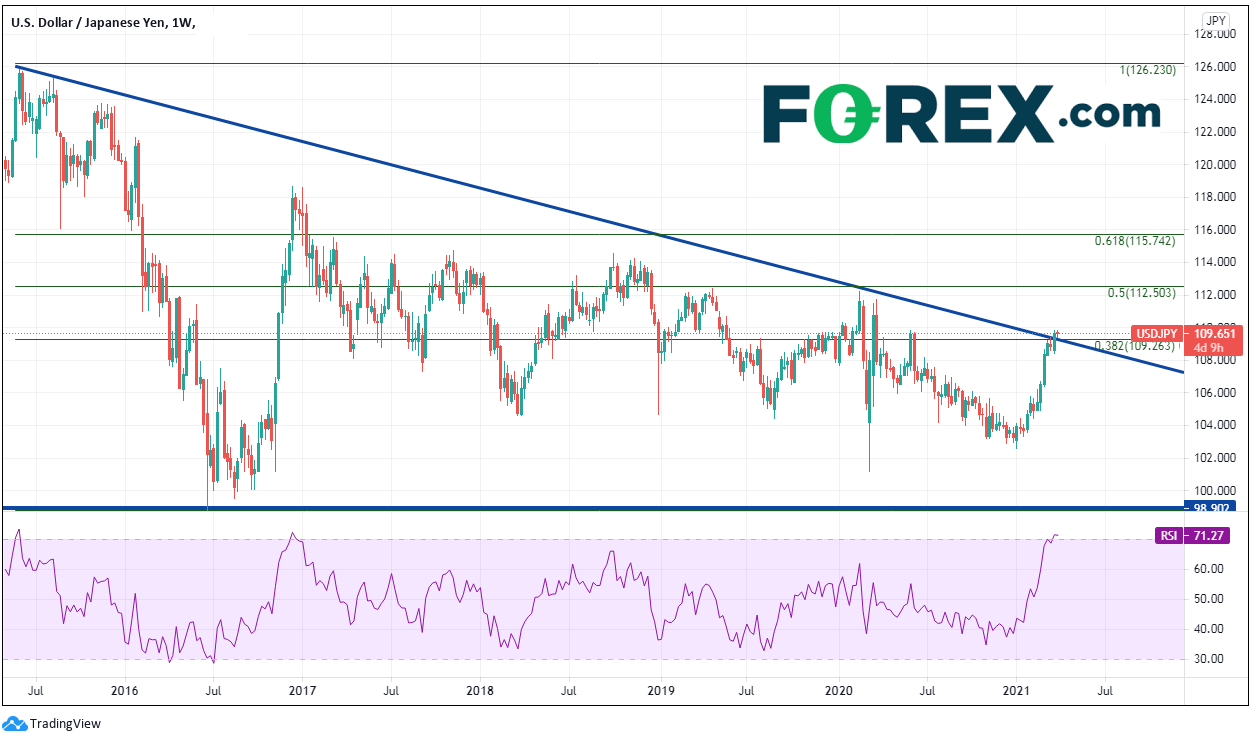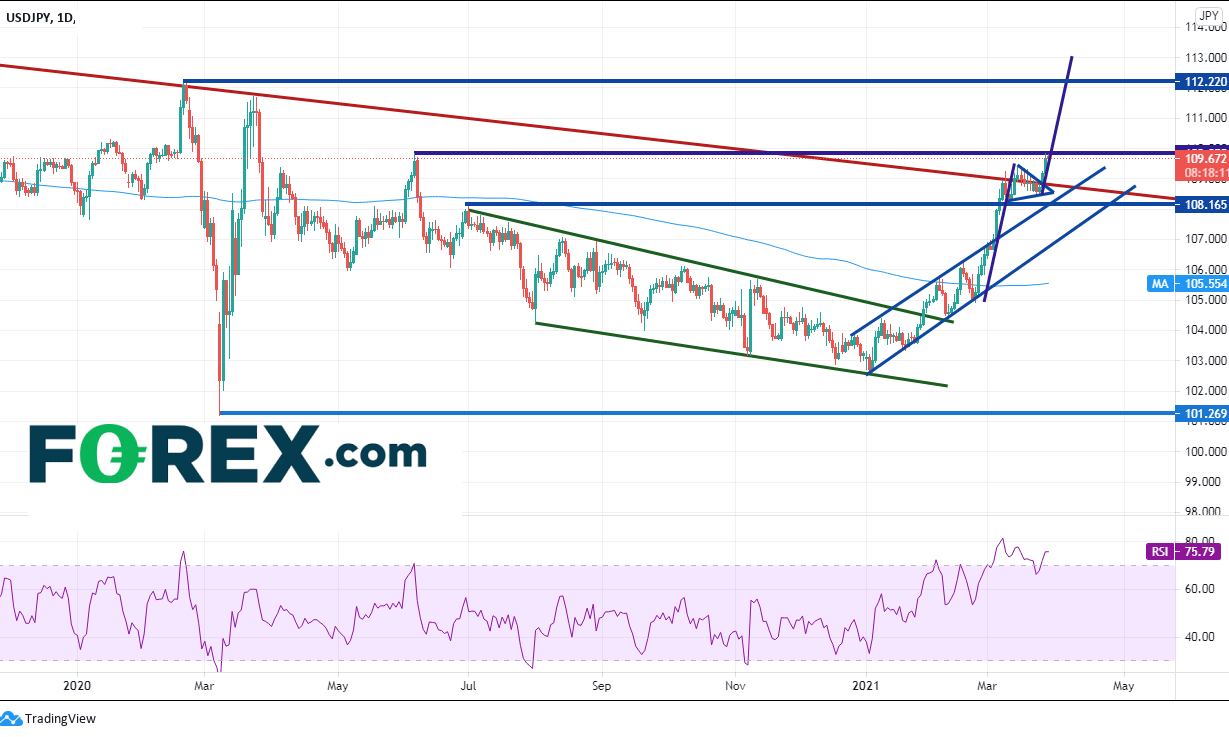
The US Dollar has been on a tear since the beginning of 2021, following interest rates higher. With the Fed still flooding the market with US Dollars via monetary stimulus, US President Joe Biden’s $1.9 trillion fiscal stimulus plan passed, an estimated $3 trillion of infrastructure spending on its way, and the possibility of another COVID-19 stimulus plan in April, the US Dollar should be six feet underground by now! But its not. As a matter of fact, the US Dollar index is at its highest levels since November 2020. The reason is twofold:
1) Bond traders continue to dismiss the Feds conclusion that inflation expectations transitory and the rise in interest rates are unsustainable. Therefore, they sell bonds and interest rates rise.
2) The US economic recovery is coming back strong.
As yields rise, it is bringing the US Dollar along with it.
The Fed has a dual mandate, which is to control inflation and maximize employment. Fed Chairman Powell has already indicated that he is not concerned about inflation. Their main goal right now is to maximize employment. This Friday, the US will release Non-Farm Payrolls for March. As the economy continues its “reopening”, more jobs need to be filled(especially in the service sector). As a result, expectations are for a whopping +655,000 vs February’s print at +379,000. Note that the number will be released on a holiday in most parts of the world, including the US, and markets will be closed. Expect the fx markets to be volatile around this number.
The BOJ has been trying to stimulate the Japanese economy since the 1990s. Their efforts have included lowering interest rates into negative territory, yield curve control, and buying ETFs in the stock market. Until recently, there efforts have been muted. Throw in a pandemic, and it makes matters worse, until now. The global monetary stimulus since the pandemic has helped lift all stock markets, including the Nikkei and Topix. This has put the BOJ in a quandary: sitting on huge profits from their stock market purchases, how can they justify more QE (which is needed!) when stock markets are rising? Their answer: expand the band around the targeted 0% band in the 10-year JGB from 20bps to 25bps. It was a symbolic gesture to let people know they are doing “something”. On Tuesday Japan will release the Tankan Large Manufacturers index for Q1. Expectations are for a print of 0 vs -10 in Q4. The large business sentiment index has been falling since 2018, however had moved into negative territory in Q1 2020. This largely watched index will be watched closely by markets to see where businesses feel they are headed.
Everything you should know about the Japanese Yen
On a weekly timeframe, USD/JPY has been moving lower since June 2015! However, last week the pair broke above the downward sloping trendline for the first time. In addition, it broke above the 38.2% Fibonacci extension from the highs of June 2015 to the lows of June 2016 at 109.26! The RSI moved slightly into overbought territory, indicating a pullback or a consolidation may be ahead.

Source: Tradingview, FOREX.com
On a daily timeframe USD/JPY had been moving lower in a descending wedge since July 1st, 2020 and finally broke higher on January 21st. The target for a descending wedge is a 100% retracement. The target was reached on March 5th and the pair consolidated at the long-term weekly trendline (red), forming a pennant formation. On Friday, USD/JPY broke out of the pennant formation. The target for a pennant formation is the length of the flagpole added to the breakout point, which is near 113.00. The pair is currently running into horizontal resistance from June 5th near 109.85 as the RSI moves back into overbought territory and is diverging.

Source: Tradingview, FOREX.com
If price breaks above the current horizontal resistance, the next of resistance isn’t until 112.25, which is the highs from February 2020. Next resistance is the 50% retracement on the weekly timeframe near 112.50. Keep in mind that price rarely moves in a straight line, and the RSI on both the weekly and daily are overbought (as well diverging on the daily). Support is back at the pennant breakout and the weekly trendline near 109. Below there is horizontal support at 108.15.
This week could be volatile for USD/JPY. NFP, the Tankan survey, Biden’s infrastructure proposal, and interest rate movements could all affect the pair. As the RSIs are overbought, if price does pullback, the 108.16 level will be key. It will confirm a false breakout above the pennant and the weekly trendline, as well has horizontal support on the daily!
Learn more about forex trading opportunities.



